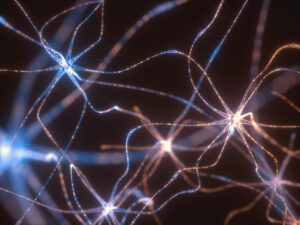How Emotions Impact Learning: What We Feel, Say and Do Matter
Categories: Uncategorized
What story do you tell yourself? Our thoughts, feelings, language, experiences and physical sensations activate thousands of neurons to form neural networks, which in turn influence how we think of ourselves as learners.
In 1949, Canadian Neuropsychologist Donald Hebb first used the saying, “The neurons that fire together wire together” to reinforce what happens in the learning process. When we learn a new skill—academic, athletic, musical, social or otherwise—neural pathways form. The more we practice, the more we stimulate and strengthen these neural networks.
We often experience “emotional” moments—positive or negative—that lay the foundation for healthy or unhealthy narratives about ourselves as learners. For example, students with negative learning experiences may lack interest in a skill, avoid challenges, feel frustrated while learning or fear making mistakes. On the other hand, learning that prompts positive thoughts, emotions and multi-sensory experiences develop efficient networks that can boost retrieval of information and build confidence and resilience.
Good news! It isn’t too late to reframe old, adverse patterns.
By reframing thoughts and taking more productive actions, new neural networks form, which can result in the development of skills you never thought possible. For example, if you have a history of repeated failures in Math, perhaps you think to yourself, “I’ll never be able to do this math problem! I’ve always hated math. This teacher is horrible.” You might feel irritable or tense, which leads you to put your head down on your desk, distract others with off task comments, or escape to sharpen your pencil multiple times. Your behaviors may be misinterpreted as signs of laziness or reluctance, when in fact your stress response has activated and is blocking learning. In this sequence, not much math learning happens, except to confirm in your mind that you don’t like math and aren’t very good at it.
Think of the different neural networks that form by reframing your thoughts to, “This problem looks challenging and will require my full focus. What’s my plan? Mmmm…let’s follow the steps on the board, one at a time. If I get stuck, I’ll ask the teacher or a friend for help.” In this scenario, Math may still be a difficult task. However, with practice, effort and helpful feedback, you’ll build better math proficiency and stamina. Moreover, you’ll begin to realize you have more control over your thoughts, feelings, words and actions than you previously thought.
What are you waiting for? Let the learning and transformation begin!
Image source: ktsimage
Noel Foy
Neuroeducator, Consultant, Author and Speaker
A former classroom teacher and Learning Specialist, Noel is founder of AMMPE™ Neuroeducational Consulting. She is the author of ABC Worry Free, a children’s book with an engaging story and actionable approach to process everyday challenges and manage anxious feelings. Her mission is to empower teachers, parents, counselors, coaches and students with quick, user friendly ways to use neuroeducation findings to their advantage so they can decrease stress and boost learning, engagement, executive function and performance in and beyond the classroom.

